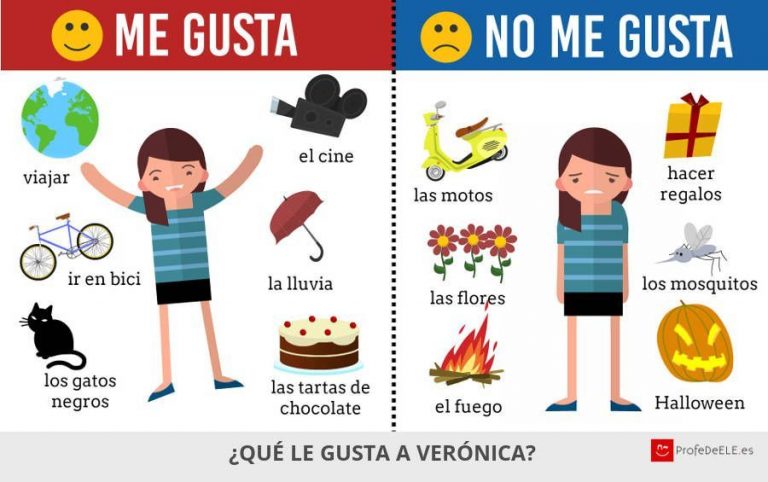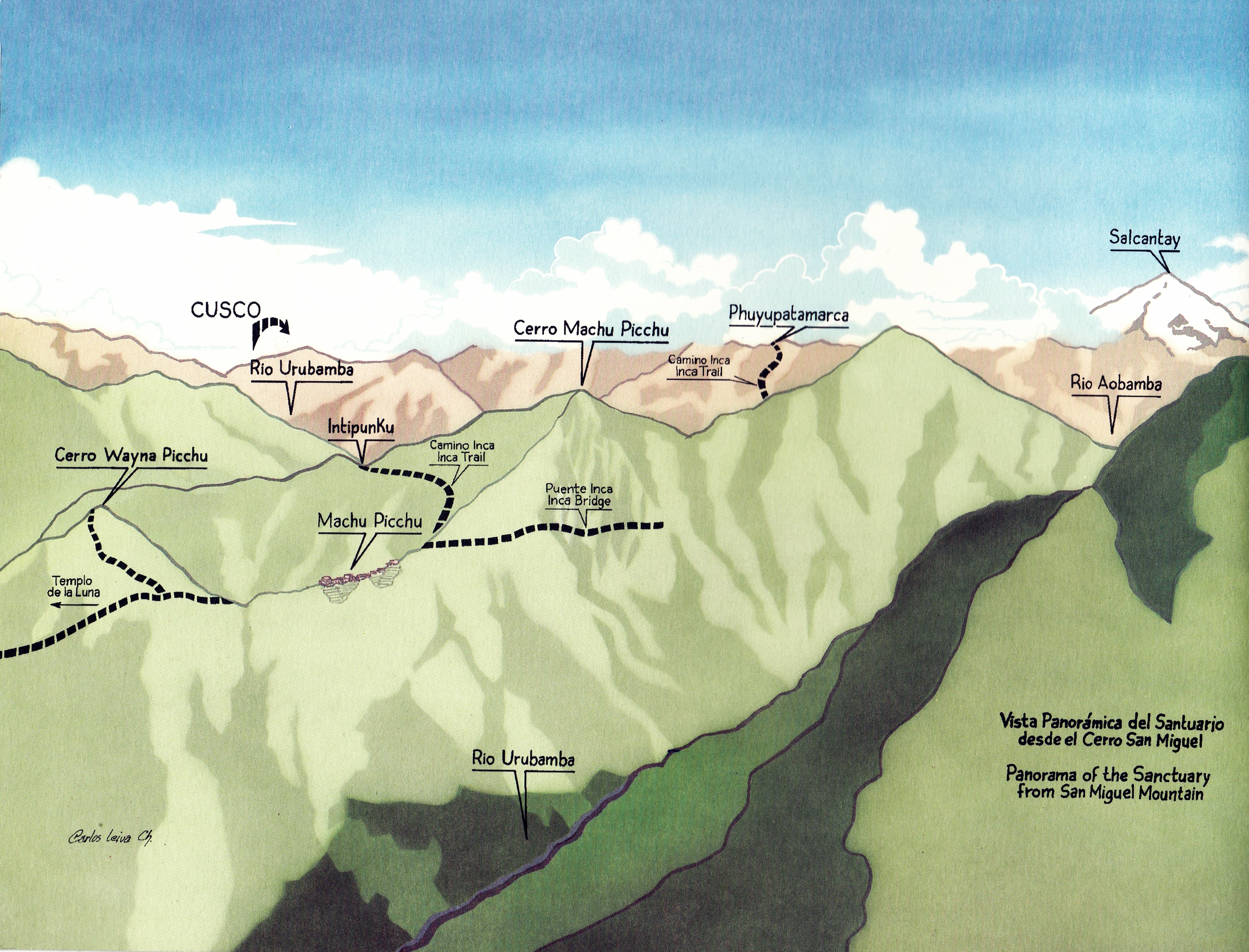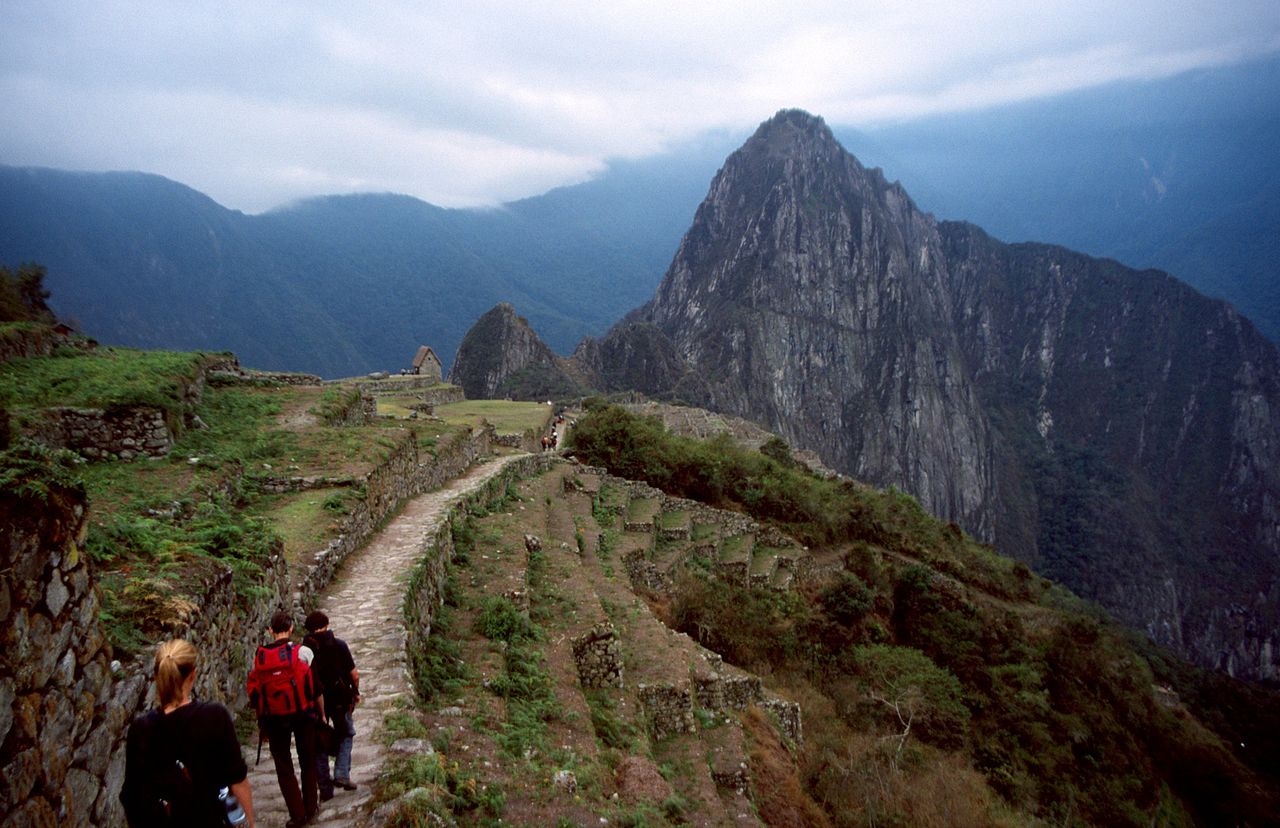Capítulo 7
| Site: | LOUIS Learning Management System |
| Course: | Elementary Spanish I+II (6 credit hours) |
| Book: | Capítulo 7 |
| Printed by: | Guest user |
| Date: | Tuesday, April 8, 2025, 12:31 AM |
Description
In this chapter, I will:
Differentiate between the verbs saber and conocer to discuss things that are known in different situations (CO 1, 4)
Manipulate sentences to incorporate indirect object pronouns (CO 1, 4)
Express my preferences and other interests using verbs like gustar (CO 1, 4)
Assemble sentences using demonstrative adjectives and pronouns to describe the world around me (CO 1,4)
Make comparisons of equality and inequality (CO 1, 4)
Analyze a group of people or items and describe the extremes (ie. tallest, shortest) using superlatives (CO 1, 3, 4)
Use the superlative suffix ísmo/a/os/as to add emphasis to characteristics (CO 1,4)
Discuss cultural, geographical, and historical facts about Perú (CO 5)
Table of contents
- 1. Lección 61: Welcome to Chapter 7 ¿Qué te fascina? Introduction to “saber” and “conocer
- 2. Lección 63: Expressing to whom, for whom, or from whom an action is done
- 3. Lección 64: Expressing our preferences
- 4. Lección 65 and 66: Demonstrative adjectives
- 5. Lección 67 and 68: Make comparisons of equality and inequality
- 6. Lección 69: Analyze a group of people or items and describe the extremes
- 7. Lección 70: An introduction to Perú
- 8. Lección 71: Reflection
1. Lección 61: Welcome to Chapter 7 ¿Qué te fascina? Introduction to “saber” and “conocer
Objective: Differentiate between the verbs saber and conocer to discuss things that are known in different situations (CO 1, 4)
- Read the section about saber and conocer in Chapter 7 in the textbook.
- Watch the following :Glorieta de ATOCHA
Glorieta de ATOCHA: Estación de Atocha, Ministerio de Agricultura, fuente de la Alcachofa” by Cicerone TV is licensed under CC BY 4.0
Responde a las siguientes preguntas sobre el servicio de trenes. Escribe tus respuestas y luego comparte con tu compañero.
¿Conoces si hay una estación de tren en tu ciudad? ¿Sabes si tiene nombre? ________________________________________________________
¿Conoces algunas rutas de trenes que pasan por Louisiana? ________________________________________________________
¿Sabes cuántos pasajeros toman en tren en el estado de Louisiana cada año? ________________________________________________________
¿Te gustaría tomar el tren? ________________________________________________________

“To Know: Saber vs. Conocer”. Jerry Parker/Canva.
shared under a CC BY-NC 4.0 license and was authored, remixed, and/or curated by M. Barrio De Mendoza, K Gutiérrez, H.Ho, C. Lin, & A Stere Lugo
2. Lección 63: Expressing to whom, for whom, or from whom an action is done
Objective: Manipulate sentences to incorporate indirect object pronouns (CO 1, 4)
- Read Chapter 7 Section 70: Los complementos indirectos
is shared under a CC BY-NC-SA 4.0 license and was authored, remixed, and/or curated by Nancy Ballesteros, Alejandro Lee, Nicolás Crisosto, & Cristina Moon
3. Lección 64: Expressing our preferences
Objectives: Express my preferences and other interests using verbs like gustar (CO 1, 4)
- Read Chapter 7 Section 71: Los verbos como Gustar
El Verbo Gustar y otros verbs similares
Qué le gusta a Verónica?
A student talks about her likes and dislikes. Listen to what she says, using the image below for help.

![]() Paso 1
Paso 1
Escucha a Verónica otra vez y decide si estas afirmaciones son Ciertas (C) o Falsas (F). Trabaja con un@ compañer@. Work with someone you haven’t worked with before.
| 1. Para Verónica, el mundo no es interesante. | C | F |
| 2. Verónica vive en una ciudad. | C | F |
| 3. A Verónica le gusta caminar a la universidad. | C | F |
| 4. A Verónica le gustan los perros de color negro (black). | C | F |
| 5. La celebración favorita de Verónica es Halloween. | C | F |
| 6. A Verónica no le gustan los mosquitos. | C | F |
| 7. A Verónica le gusta comprar regalos (gifts) para sus amigas. | C | F |
| 8. A Verónica le gusta Netflix. | C | F |
¡Conversemos!
Trabaja con un@ compañero@ y practica tu español en esta situación social. You need to use the vocabulary and structures you have learned so far. Change roles and partners after practicing each situation once.
Estudiante 1. Call your best friend from high school and tell them about your new roommate and apartment off campus. Describe your roommate and apartment, including:
- Their age and appearance;
- Their personality (e.g., what they like and dislike);
- Why they are a good roommate (e.g., describe the household chores they do).
- Apartment: Talk about its location, number of rooms (describe each room—talk about furniture).
- Say why you like it. Ask questions and share as much information as possible.
Estudiante 2. Your best friend from high school calls you to tell you about their new roommate and apartment in college. Ask questions about:
- Your friend’s roommate, and
- What they like about their new city and university.
- Their new apartment.
- Tell your friend about your new girlfriend/boyfriend or friend.
- Describe their age, personality, and appearance. Ask questions and share as much information as possible.
Trayectos is an Open Educational Resource (OER), and, as such, it can be used freely, without the need for users to incur in any financial costs.
This work is licensed under a Creative Commons Attribution-ShareAlike 4.0 International License.
4. Lección 65 and 66: Demonstrative adjectives
Read Chapter 7 Section 72: Demonstrative adjectives

shared under a CC BY-NC 4.0 license and was authored, remixed, and/or curated by M. Barrio De Mendoza, K Gutiérrez, H.Ho, C. Lin, & A Stere Lugo (ASCCC Open Educational Resources Initiative) .
5. Lección 67 and 68: Make comparisons of equality and inequality
Objective: Make comparisons of equality and inequality (CO 1, 4)
- Read Chapter 7 Section 73: Comparaciones de desigualdad y desigualdad
shared under a CC BY-NC 4.0 license and was authored, remixed, and/or curated by M. Barrio De Mendoza, K Gutiérrez, H.Ho, C. Lin, & A Stere Lugo
6. Lección 69: Analyze a group of people or items and describe the extremes
Objective: Analyze a group of people or items and describe the extremes (ie. tallest, shortest) using superlatives (CO 1, 3, 4)
Read Chapter 7 Section 75: Los superlativos
shared under a CC BY-NC 4.0 license and was authored, remixed, and/or curated by M. Barrio De Mendoza, K Gutiérrez, H.Ho, C. Lin, & A Stere Lugo
7. Lección 70: An introduction to Perú
.
Hablemos de cultura: Perú

Attribution: By Martin St-Amant, licensed under CC BY-SA 3.0.
Datos generales
| NOMBRE OFICIAL: República de Perú |
| CAPITAL: Lima (12.140.000 de habitantes) |
| POBLACIÓN DEL PAIS: 30.475.144 |
| IDIOMAS: El español o castellano, quechua, aimara |
| CIUDADES PRINCIPALES: Arequipa, Cusco, Iquitos, Puno |
| MONEDA: Nuevo sol |
Perú es un país de América del Sur. Limita con Ecuador y Colombia al norte, Brasil al este, Chile al sur y Bolivia al sureste. La ciudad capital es Lima. El país tiene una historia muy importante (por ejemplo, las ruinas de Machu Picchu y las líneas de Nazca están allí) y una geografía muy variada con las montañas de los Andes y parte del Amazonas en su territorio.
Las exportaciones más importantes de Perú son el pescado y el oro (gold) y otros metales. El turismo es también muy importante. Además, este país tiene una de las gastronomías más diversas del mundo. Los lugares más conocidos son quizás (perhaps) Cusco y las ruinas incas de Machu Picchu donde hay muchos edificios construidos por esta civilización. Aprendemos más sobre estos dos lugares.
Modified from: “Peru” by Wikipedia, licensed under CC BY-SA 3.0.
La ciudad de Cusco

Cusco es una hermosa ciudad con una arquitectura colonial bien conservada, evidencia de su historia rica y compleja. La ciudad representa el centro de la cultura quechua en los Andes y si una persona camina por sus calles puede ver las diferentes etapas históricas del lugar. Por ejemplo, los edificios coloniales españoles tienen origen en las paredes incas. La ciudad está rodeada por una serie de ruinas y las más impresionante son las de Sacsayhuamán, el sitio donde, en 1536 (mil quinientos treinta y seis), los incas lucharon (fought) contra los españoles para defender su territorio y cultura. Hoy en día, Cusco es conocida (known) por su cultura quechua y aimara y por su turismo.
El Camino (del) Inca
Attribution: By Colegota, licensed under CC BY-SA 2.5.
El Camino del Inca (o el Camino Inca) es un sendero que te lleva a la ciudad inca de Machu Picchu desde Cusco. Consiste de un sistema de caminos de 45 kilómetros (26 millas). En 2014 (dos mil catorce), estos senderos fueron (were) declarados Patrimonio de la Humanidad por la UNESCO. El Camino del Inca es parte del Santuario de Machu Picchu, un área protegida de 32.592 (treinta y cinco mil quinientas noventa y dos) hectáreas. Cada visitante debe obedecer las reglas de este lugar. Por ejemplo, los turistas no pueden tirar basura, cortar o dañar árboles, sacar o dañar piedras de las ruinas y el camino, acampar en los sitios arqueológicos, etc. Llegar a Machu Picchu caminando lleva aproximadamente 4 días y 3 noches. El mapa arriba te muestra la ubicación de los caminos y la ciudad.
Modified from: “Inca Trail” by Wikivoyage, licensed under CC BY SA 3.0.

El Camino del Inca y Machu Picchu
Attribution: Public domain.
8. Lección 71: Reflection
¡A reflexionar!
Before moving on to Chapter 8, reflect upon what you can do with the language. Check off all of the things on the list below that you can do and provide evidence. For any actions you cannot yet do, review the topic and seek out additional resources such as tutoring, extra help from your instructor, online materials, etc. Could you also do it orally?
After completing this chapter, I can:
 Differentiate between the verbs saber and conocer to discuss things that are known in different situations.
Differentiate between the verbs saber and conocer to discuss things that are known in different situations.
Evidence:___________________________________________
 Manipulate sentences to incorporate indirect object pronouns.
Manipulate sentences to incorporate indirect object pronouns.
Evidence:___________________________________________
 Express my preferences and other interests using verbs like gustar.
Express my preferences and other interests using verbs like gustar.
Evidence:___________________________________________
 Assemble sentences using demonstrative adjectives and pronouns to describe the world around me.
Assemble sentences using demonstrative adjectives and pronouns to describe the world around me.
Evidence:____________________________________________
 Make comparisons of inequality.
Make comparisons of inequality.
Evidence:___________________________________________
 Make comparisons of equality.
Make comparisons of equality.
Evidence:___________________________________________
 Analyze a group of people or items and describe the extremes
Analyze a group of people or items and describe the extremes
(ie. Tallest, shortest) using superlatives.
Evidence:___________________________________________
 Use the superlative suffix ísmo/a/os/as to add emphasis to characteristics.
Use the superlative suffix ísmo/a/os/as to add emphasis to characteristics.
Evidence:___________________________________________
¡A reflexionar sobre los objetivos!
Goal setting, Paso 1. As we are working to be our best language learners, we need to regularly check in on our progress toward our goals. Use the questions below to reflect upon the goals you set for yourself at the beginning of the chapter.
My two short term goals were:
1. ___________________________________________________________
-Did you follow your action plan? In what way(s)? What worked? What didn’t work?
– _______ I have achieved this goal/ _______ I made progress toward this goal/
– _______ I have not made progress toward this goal and should make a revision to my goal or my action plan.
2. ___________________________________________________________
– Did you follow your action plan? In what way(s)? What worked? What didn’t work?
– _______ I have achieved this goal/ _______ I made progress toward this goal/
– _______ I have not made progress toward this goal and should make a revision to my goal or my action plan.
My one long-term goal was:
3. ___________________________________________________________
– Did you follow your action plan? In what way(s)? What worked? What didn’t work?
– _______ I have achieved this goal/ _______ I made progress toward this goal/
– _______ I have not made progress toward this goal and should make a revision to my goal or my action plan.
What do you currently feel is your greatest strength with Spanish? What do you attribute this success to? Is there something you are doing in this area that you could apply to weaker areas?
¡A revisar los objetivos!
Goal setting, Step 2. Before moving on to the next chapter, take a moment to update your goals and/ or action plans. It is okay to keep goals that you set for yourself previously if you are still working toward them.
My two short term goals with action plans:
1.
2.
My one long-term goal with an action plan:
3.
Study strategies I find useful:
New study strategies I could try:
¡A revisar los objetivos!
Goal setting, Paso 2. Before moving on to the next chapter, take a moment to update your goals and/ or action plans. It is okay to keep goals that you set for yourself previously if you are stillworking toward them.
My two short term goals with action plans:
1.
∙
2.
∙
My one long-term goal with an action plan:
3.
∙
Study strategies I find useful:
New study strategies I could try:
